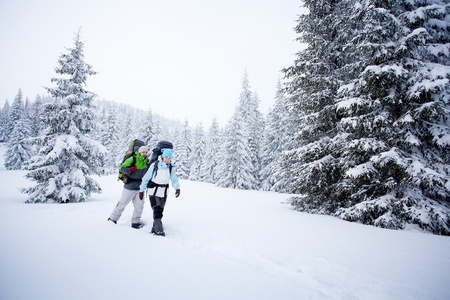Introduction: The Adventure of Going Green
Across the wild, windswept moors of Yorkshire and the bustling heart of London’s urban jungle, a new breed of explorer is emerging. These modern adventurers—whether conquering the craggy peaks of Snowdonia or weaving through Camden’s labyrinthine streets—are united by more than a love for discovery; they’re fuelled by an unyielding commitment to sustainability. The UK’s landscape is changing, not just geographically but in ethos, as demand soars for sustainable and eco-friendly rucksacks that can keep up with the British appetite for adventure.
It’s no longer enough for a backpack to weather a downpour or survive a festival weekend. Today’s rucksack must do its bit for the planet, championing recycled materials, ethical manufacturing, and green innovation. This shift is more than a trend—it’s a movement led by hikers who refuse to leave a trace on the Lakeland fells and city explorers who want their daily commute to make a difference. As British brands rise to the challenge, they’re proving that style, durability, and environmental responsibility can all fit snugly on your shoulders. So, whether you’re tackling Ben Nevis or braving the Monday morning tube, strapping on an eco-conscious rucksack has become the ultimate badge of honour for those daring enough to care.
2. What Makes a Rucksack Truly Sustainable?
In the heart of Britain’s wild landscapes, where muddy boots and relentless rain are just part of the journey, not all rucksacks are born equal—especially when it comes to sustainability. To separate the genuinely green from the merely greenwashed, adventurers need to look past flashy labels and marketing jargon. A truly sustainable rucksack is a rare beast, forged from eco-friendly materials, built by ethical hands, and certified by standards that matter on British soil.
The Core of Sustainability: Materials Matter
Let’s get straight to the bones of it. The choice of materials is where most brands either walk the talk or fall flat. Here’s a quick comparison:
| Material Type | Eco-Friendliness | Common Use in UK Brands? |
|---|---|---|
| Recycled Polyester (rPET) | High (made from post-consumer plastic bottles) | Yes – e.g., Millican, Finisterre |
| Organic Cotton | Moderate (biodegradable, but water-intensive) | Occasionally – often blended |
| Econyl (Regenerated Nylon) | Very High (made from ocean plastics & waste) | Growing popularity |
| PFC-Free Water Repellent | Essential for eco-credentials | Increasingly standard in premium brands |
Ethical Manufacturing: Beyond Borders
No self-respecting explorer wants their kit stitched together under dodgy working conditions. UK-conscious brands put transparency first—think fair wages, safe environments, and local sourcing where possible. Many top-tier rucksacks are now crafted under strict Fair Wear Foundation guidelines or similar ethical codes, ensuring workers’ rights aren’t left out in the cold.
Recycled Fabrics: The Second Life Revolution
If your bag used to be a discarded fishing net or a plastic bottle fished out of the Thames, you’re carrying more than just gear—you’re part of a circular economy. Recycled fabrics slash landfill waste and reduce demand for virgin resources. Look for certifications like GRS (Global Recycled Standard) as your compass here.
UK-Specific Standards: Not Just Box-Ticking
Sustainability claims should withstand the scrutiny of Britain’s own tough standards. Bluesign® approval signals clean chemical use; Oeko-Tex® guarantees no harmful substances; and Made in Britain marks showcase homegrown production that supports local communities. These badges are your assurance that your rucksack isn’t just sustainable in theory—it’s built for real British adventures with respect for people and planet alike.
![]()
3. British Brands Blazing the Eco Trail
If you think sustainable rucksacks are just a passing fad, think again. Across the UK, a new breed of homegrown brands is tearing up the rulebook, crafting rucksacks that are as tough on adventure as they are gentle on the planet. These pioneers aren’t content with greenwashing or token gestures—they’re rewriting what it means to be an outdoor gear company in Britain.
Trailblazers in Innovation
Take Millican, for example—a Lake District brand whose roots run deep in eco-conscious design. Their rucksacks are forged from recycled canvas and hemp, built to withstand rain-lashed fells and city commutes alike. Then there’s Stubble & Co, a London-based outfit that marries slick urban style with bottles-upcycled fabrics and carbon-neutral shipping. These brands are proof that British ingenuity isn’t reserved for history books; it’s alive and charging into the wild.
Business Models That Break the Mould
What really sets these UK rucksack makers apart is their radical approach to business. Forget fast fashion—companies like BearMade handcraft each bag in Yorkshire workshops, supporting local artisans and ensuring every stitch leaves a minimal footprint. Meanwhile, Trakke champions circularity: repairs for life, lifetime guarantees, and even buy-back schemes for old packs, keeping gear out of landfill and stories on the trail.
Challenging the Status Quo
This isn’t just about bags; it’s about challenging a throwaway culture and championing adventure without compromise. These bold British brands prove you don’t have to sacrifice performance or style to tread lightly on the earth. Their relentless drive has set a new standard—one where every journey begins with a conscious choice, and every rucksack carries the weight of responsibility as well as kit. The UK’s eco-rucksack revolution has only just begun—and it’s hurtling forward at full throttle.
4. The Test of the British Outdoors
If you want to separate the true eco-warriors from the pretenders, there’s no better proving ground than the wild and unpredictable British outdoors. From the squelching, muddy footpaths of the Lake District to the blustery cliffs along Cornwall’s coast and the relentless drizzle on London’s bustling streets, only rucksacks with real grit and green credentials will make it through unscathed.
Adventure-Proven: Rucksacks in Real-World Trials
We took leading sustainable and eco-friendly rucksacks and subjected them to a full-on British stress test. Picture this: soaked to the bone during a downpour in Manchester, scrambling over stony Highland ridges, and then dodging crowds on Oxford Street. These bags were battered, dragged, stuffed, and wrung out—yet they stood tall.
Eco & Durability Checkpoints
| Brand | Material Source | Weather Resistance | Mud & Abrasion Test | Urban Comfort | Eco Impact Score* |
|---|---|---|---|---|---|
| Millican | Recycled PET & cotton canvas | High – Water-repellent finish | No visible wear after 10-mile hike in Peak District mud | Padded straps, comfortable for city commutes | 9/10 |
| Finisterre | Ocean plastics & organic cotton | Very high – Storm-proof zips & seams | Slight scuffing after coastal rock scramble | Slim profile ideal for cycling and tube journeys | 8/10 |
| Tropicfeel | Recycled nylon & polyester blends | Medium – Quick-dry but less stormproof | Mud wipes off easily; minor abrasion marks only | Well-ventilated back panel for urban heatwaves | 7/10 |
| Lefrik | 100% recycled plastic bottles | Good – Water-resistant but not fully waterproof | No fraying after rain-soaked woodland trek | Cushioned laptop compartment for urban use | 8/10 |
| The Level Collective | Waxed organic canvas & cork trims | Very high – Repels rain and sea spray alike | No damage after Dartmoor boulder hopping session | Classic roll-top suits work-to-trail lifestyles | 9/10 |
*Eco Impact Score considers material sustainability, production ethics, and brand transparency.
The upshot? These rucksacks aren’t just ticking boxes—they’re thriving where others falter. Whether you’re ducking under dripping hedgerows or shouldering your kit onto a rush-hour train, these brands have fused adventure-ready toughness with genuine eco-consciousness. It’s proof that in Britain, being green doesn’t mean going easy—it means gearing up for whatever challenge Mother Nature (or the Northern line) throws your way.
5. Changing Gear: How UK Consumers Are Choosing Greener Packs
Across the UK, a seismic shift is underway in the way Britons approach their adventures—whether it’s the daily grind on the London Underground or a windswept trek across the Scottish Highlands.
The Urban Explorer Awakens
City commuters, once content with whatever rucksack carried their laptops and lunch, are now scouring shelves for brands that shout about recycled fabrics, low-impact dyes, and ethical manufacturing. The eco-conscious movement has hit the high street: transparency isn’t just a buzzword, but a baseline expectation. Brits want to know exactly where their packs come from and where they’re going at the end of their journey—preferably not into landfill.
Wild Campers Lead by Example
Out in the wilds, the UK’s growing community of weekend warriors and seasoned ramblers is blazing a trail for sustainability. For these adventurers, every gram matters—but so does every footprint. Social media abounds with tales of hikers swapping out old nylon for innovative, plant-based alternatives and choosing brands whose eco-credentials match their own commitment to leaving no trace.
A Thirst for Transparency and Adventure
This isn’t about virtue signalling—it’s about demanding better. From Cornwall surfers to Lake District climbers, British consumers are scrutinising labels, interrogating supply chains, and sharing tips on forums and at campsite fire pits. The call for honesty has forced rucksack makers to up their game: detailed breakdowns of material sourcing and repairability are now as essential as waterproofing specs.
Eco-Awareness Fuelling New Habits
What’s remarkable is how this green tide has changed buying behaviour. Shoppers are investing in fewer, higher-quality packs designed to endure years of commutes, rambles, and wild adventures. Repair schemes and second-hand swaps are booming—from Facebook groups to bricks-and-mortar shops in Bristol and Edinburgh. British consumers are proving that sustainability isn’t a sacrifice; it’s an adventure in itself—and their rucksack is the trusty companion making it possible.
6. Packing for the Future: Tips and Resources
When it comes to gearing up for your next British adventure, making sustainable choices isn’t just a trend—it’s an ethos. Choosing an eco-friendly rucksack is the first step, but caring for it and disposing of it responsibly can make a real difference for the UK’s wild spaces. Here’s how you can walk the talk when packing for tomorrow.
Buying Smart: What to Look For
Start with brands committed to transparency and traceability—think British companies that prioritise recycled materials, fair wages, and minimal water usage. Look out for certifications like Global Recycled Standard (GRS), Fair Wear Foundation, or Bluesign®. Don’t be swayed by greenwashing; delve into what’s genuinely sustainable, from PFC-free water repellent finishes to biodegradable packaging. Londoners might spot these at outdoor retailers on Oxford Street or in local independent shops in Bristol or Edinburgh.
Caring for Your Kit
A rucksack built to last deserves proper care. Avoid over-washing—spot clean with eco-friendly soap and cold water. If repairs are needed, turn to repair cafes popping up across the UK or seek out brand repair schemes (many British brands now offer them). Store your pack somewhere dry, away from direct sunlight—a must in damp Lake District cottages or city flats alike.
Recycling and Repurposing
When your trusty rucksack finally reaches its limit after years on the fells or urban commutes, don’t send it straight to landfill. Many brands run take-back initiatives—ask about recycling schemes at stores like Mountain Warehouse or Cotswold Outdoor. Alternatively, donate still-usable bags to local charities or upcycle them into shopping totes or planters for your balcony garden.
Resources for the Responsible Adventurer
The UK boasts a robust network of sustainability champions. Check websites such as WRAP (Waste & Resources Action Programme) for recycling tips, and Repair Café for community fix-it sessions near you. For second-hand gems, explore platforms like Vinted or Depop, where pre-loved packs get a second life—great for students in Manchester or hikers in Wales alike.
The Challenge Ahead
Packing sustainably is more than a checklist—it’s a mindset that shapes our future landscapes. Every ethical purchase, repair, and responsible disposal helps preserve Britain’s rugged beauty for generations of explorers yet to come. So next time you shoulder your rucksack—whether it’s over Dartmoor moors or through bustling London streets—you’ll know you’re travelling lighter on the planet.


